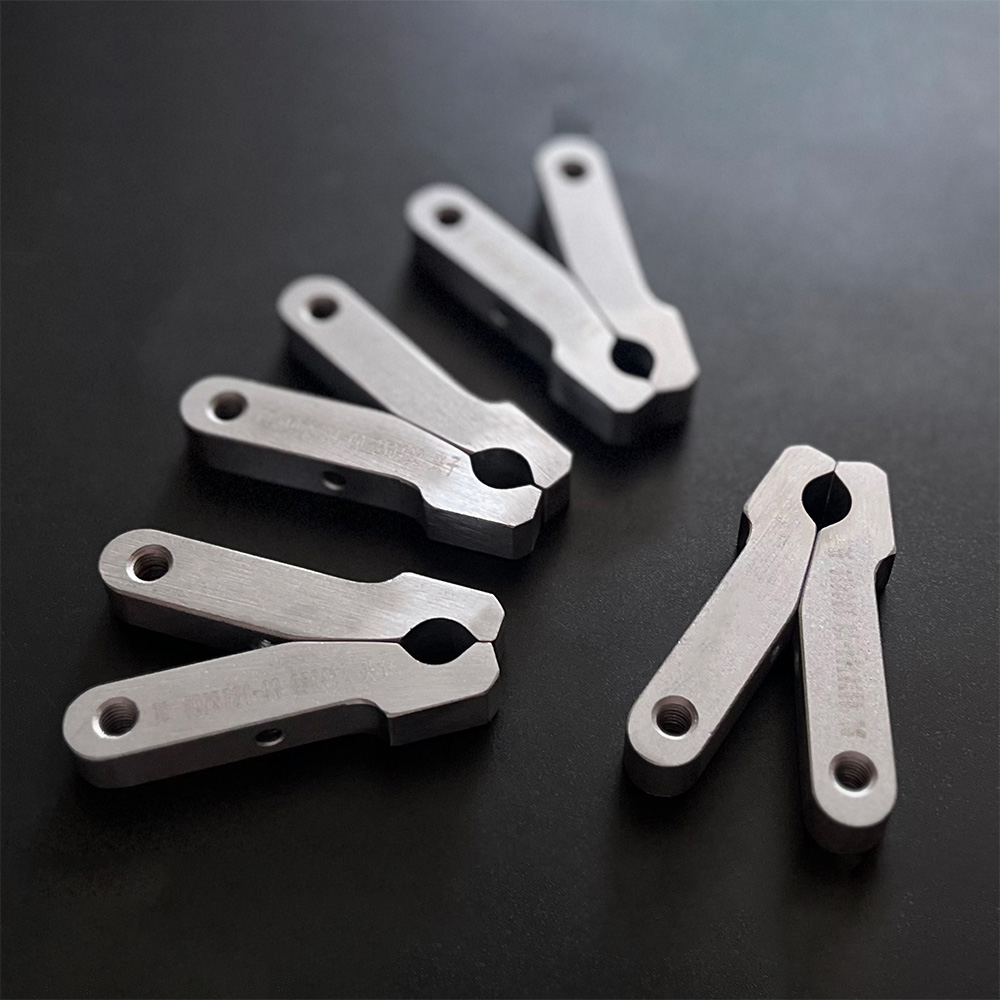What is a Transfer Finger?
A Transfer Finger is a precision-engineered component within a Cold Heading machine's transfer system, responsible for the accurate and rapid movement of semi-finished parts or blanks between successive dies and forming stations. This critical tooling element acts as a mechanical hand, gripping, lifting, translating, and precisely placing the workpiece at high speeds to maintain a continuous production flow. Typically manufactured from high-grade tool steel such as M2, D2, or powdered metals like CPM 10V, transfer fingers are designed to withstand extreme cyclical pressures, abrasive wear, and repetitive impact forces. Their operation is synchronized with the machine's main ram and feed mechanism, ensuring seamless transfer timing, often with positional accuracies requiring tolerances within ±0.005 inches (±0.127 mm) to prevent mis-feeds, jams, or part damage. The design, including geometry, grip force, and release action, is meticulously calculated based on the specific part's diameter, length, and weight to guarantee reliable handling throughout the high-volume manufacturing process.

Key Characteristics with Technical Data:
Material & Hardness: Fabricated from high-wear resistance tool steels (e.g., AISI D2 with a hardness of 58-62 HRC or Tungsten Carbide inserts with a hardness of 88-92 HRA) to endure severe abrasive conditions and maintain dimensional stability.
Precision Engineering: Manufactured to extremely tight tolerances, often with a bore diameter precision of H6/g6 fit and surface finish of 0.4 μm Ra or better to ensure smooth, friction-free operation and perfect alignment with punch and die assemblies.
High Cycle Fatigue Resistance: Engineered to perform reliably at the machine's full operational speed, which can range from 100 to over 600 parts per minute (PPM), for millions of cycles without failure.
Thermal Stability: Designed to maintain its mechanical properties and geometry despite frictional heat generation, which can elevate local temperatures at the contact point to over 200°C (392°F) during continuous operation.
Specific Load Capacity: Each finger is rated for a specific gripping force, calculated to handle part weights from a few grams up to several kilograms, with clamping forces precisely calibrated to avoid marking the workpiece.
Application Scenarios
Transfer fingers are indispensable in multi-station cold heading machines, which are the backbone of mass-producing complex metal parts through plastic deformation. Their primary application is in the high-volume manufacturing of fasteners such as bolts, screws, nuts, and rivets. In this scenario, the finger must transfer a blank through up to five forming stations, each performing a different operation like extruding, heading, piercing, or threading, all at speeds exceeding 250 PPM. Beyond fasteners, they are crucial in producing automotive components like spark plug shells, valve tappets, and wheel studs, where the material is often medium-carbon steel or alloy steel, and the transfer system must handle larger part geometries with precision. Another significant application is in the electronics industry for creating precision connectors and terminals from copper or brass alloys. Here, the fingers must be exceptionally gentle to prevent deforming or scratching the often-plated and delicate components, requiring custom tips and lower grip forces. They are also used in making specialized industrial parts like drill bits, nails, and hydraulic fittings, wherever a multi-station cold forming process is employed to minimize material waste and maximize production efficiency.
Maintenance Procedures
Proper maintenance of transfer fingers is critical for ensuring machine uptime, product quality, and tooling longevity. Maintenance is a regimented process involving daily checks, periodic cleaning, and scheduled replacement.
1. Daily/Pre-Shift Inspection: Operators should visually inspect each transfer finger for obvious signs of damage such as chipping, cracking, or excessive wear on the gripping surfaces. Any buildup of lubricant, metal dust, or debris should be cleaned immediately using a non-abrasive cloth and a suitable solvent to prevent premature wear and misalignment.
2. Dimensional Verification: Periodically, typically every 100 to 250 operating hours, fingers must be removed and measured using precision instruments like micrometers and bore gauges. Critical dimensions—including inner diameter, outer diameter, and length—should be checked against original specifications. Wear beyond a permissible limit, often set at 0.001-0.002 inches (0.025-0.050 mm) of diameter increase, indicates the need for reconditioning or replacement.
3. Lubrication: Although the fingers themselves may not require direct lubrication, the entire transfer mechanism, including the fingers' mounting points and actuating cams, must be lubricated according to the machine builder's schedule. This usually involves applying a specific grade of high-pressure grease every 40-80 hours to minimize friction and wear in the moving parts that drive the finger's motion.
4. Alignment Check: Misalignment is a primary cause of rapid finger wear and part defects. The alignment of the entire transfer assembly should be verified weekly or after any tooling changeover. Using dial indicators, technicians ensure that the finger's path is perfectly parallel to the die line and that it centers the part accurately within each die station. Adjustments are made to the transfer mechanism to correct any deviation.
5. Replacement: Transfer fingers are consumable items. Keeping a documented log of operating hours helps in predicting their lifespan, which can vary from 500,000 to several million cycles depending on the material formed and operating conditions. Worn fingers should be replaced in matched sets to maintain balance and consistent performance across all stations. Using mismatched fingers can lead to transfer timing issues and catastrophic machine jams.
6. Storage: Spare fingers should be stored in a clean, dry environment, preferably in individual protective containers. They should be lightly coated with a rust-preventative oil to prevent corrosion, which could compromise their structural integrity and surface finish before they are even installed.











